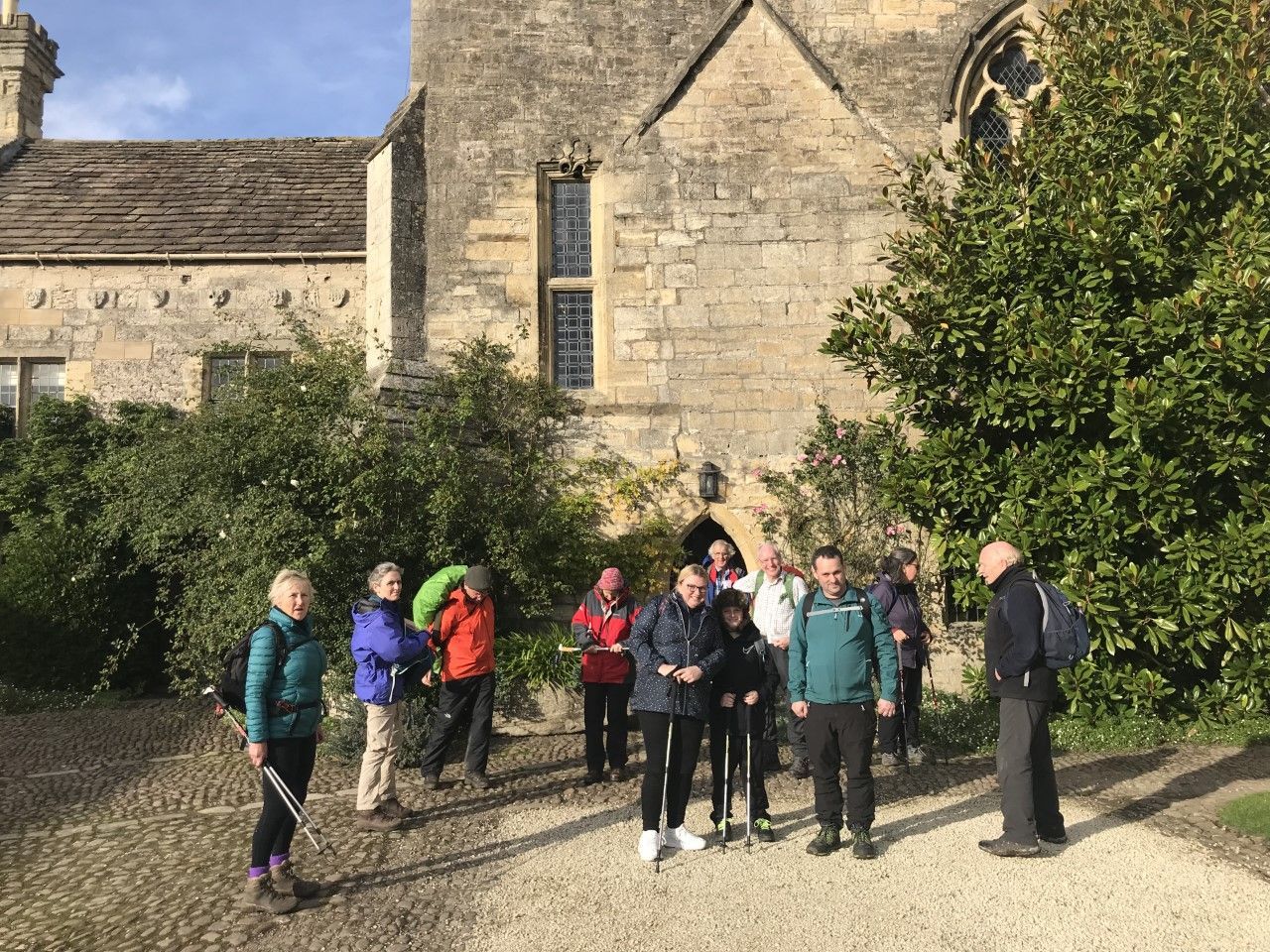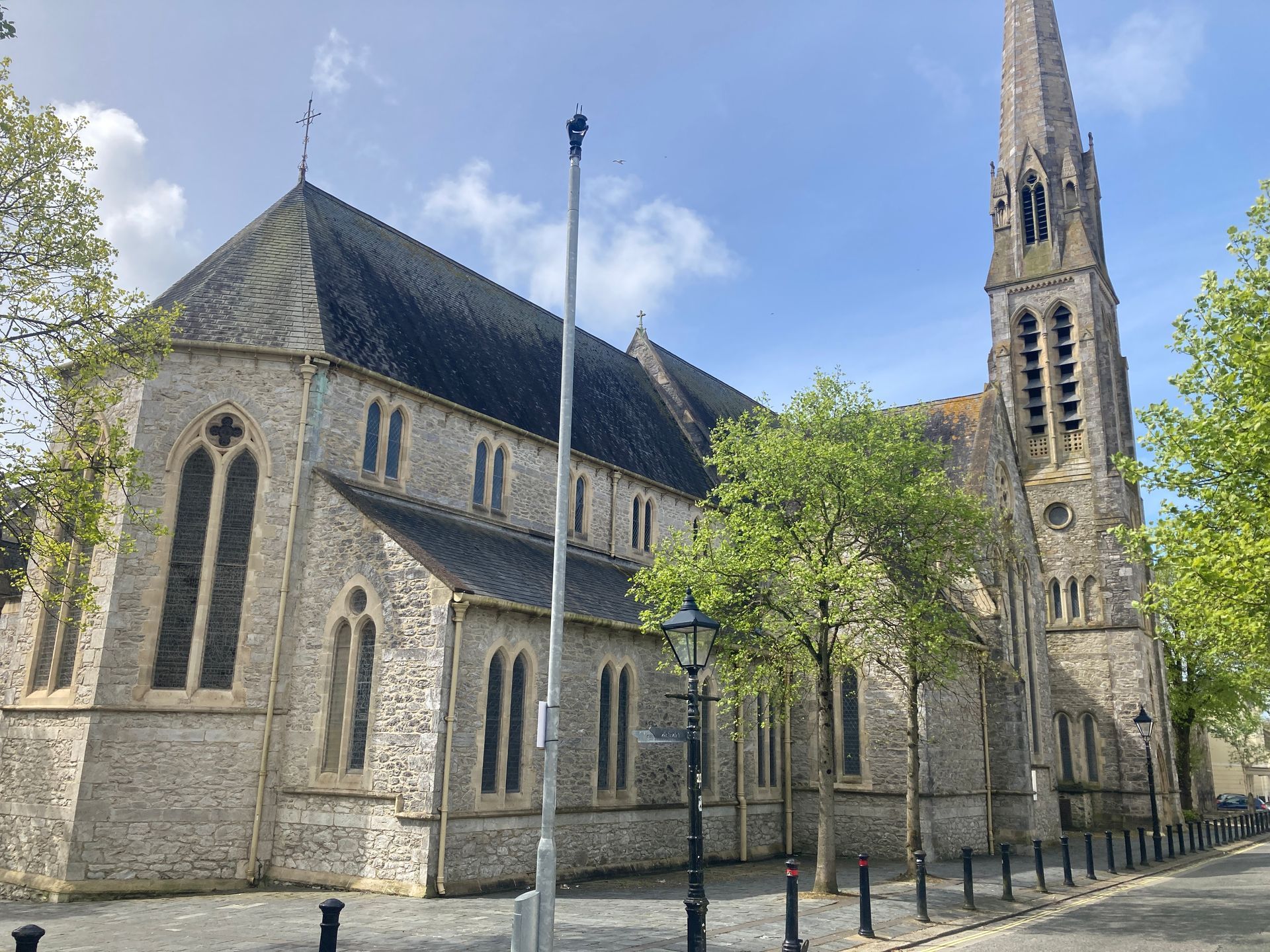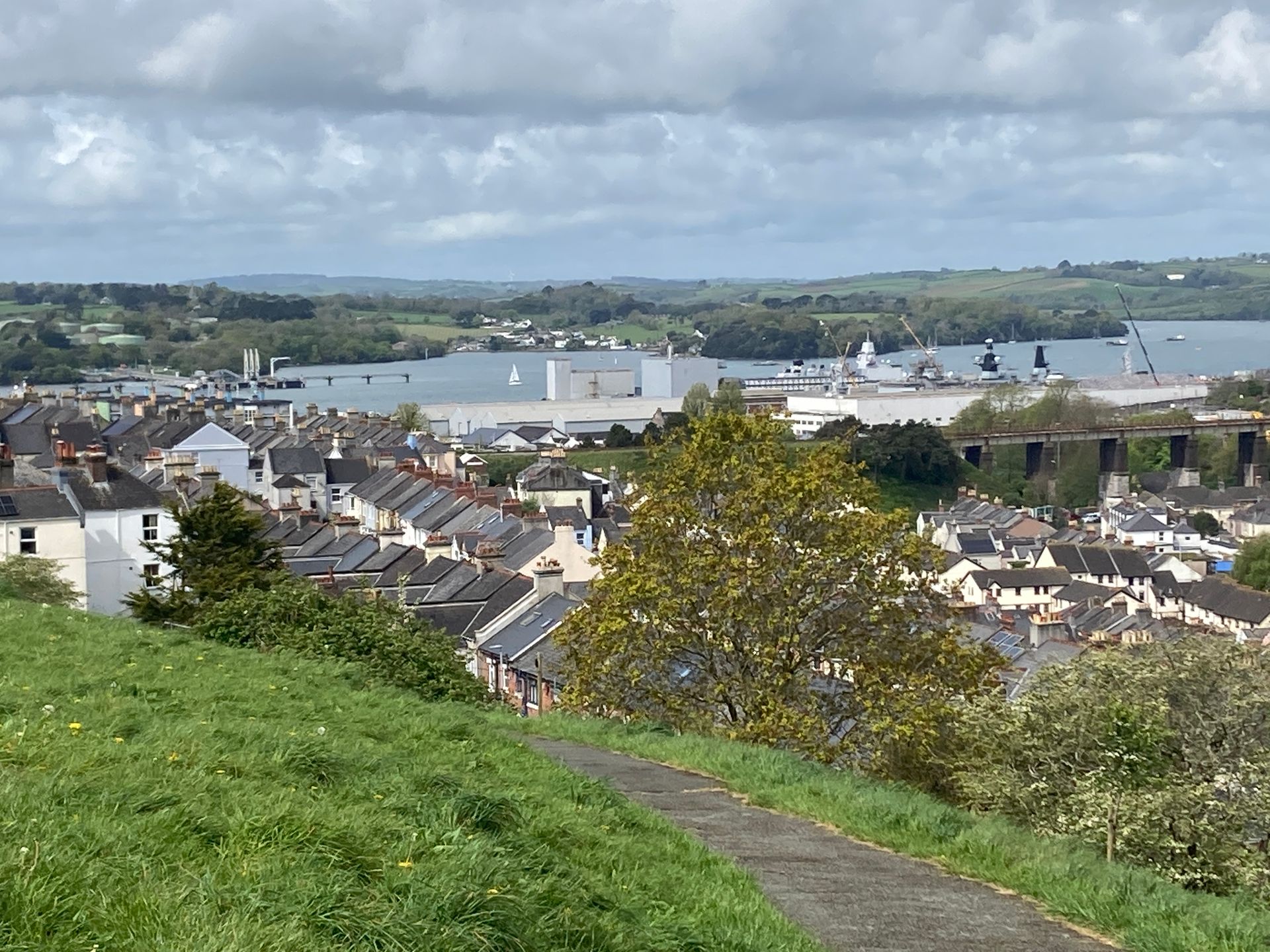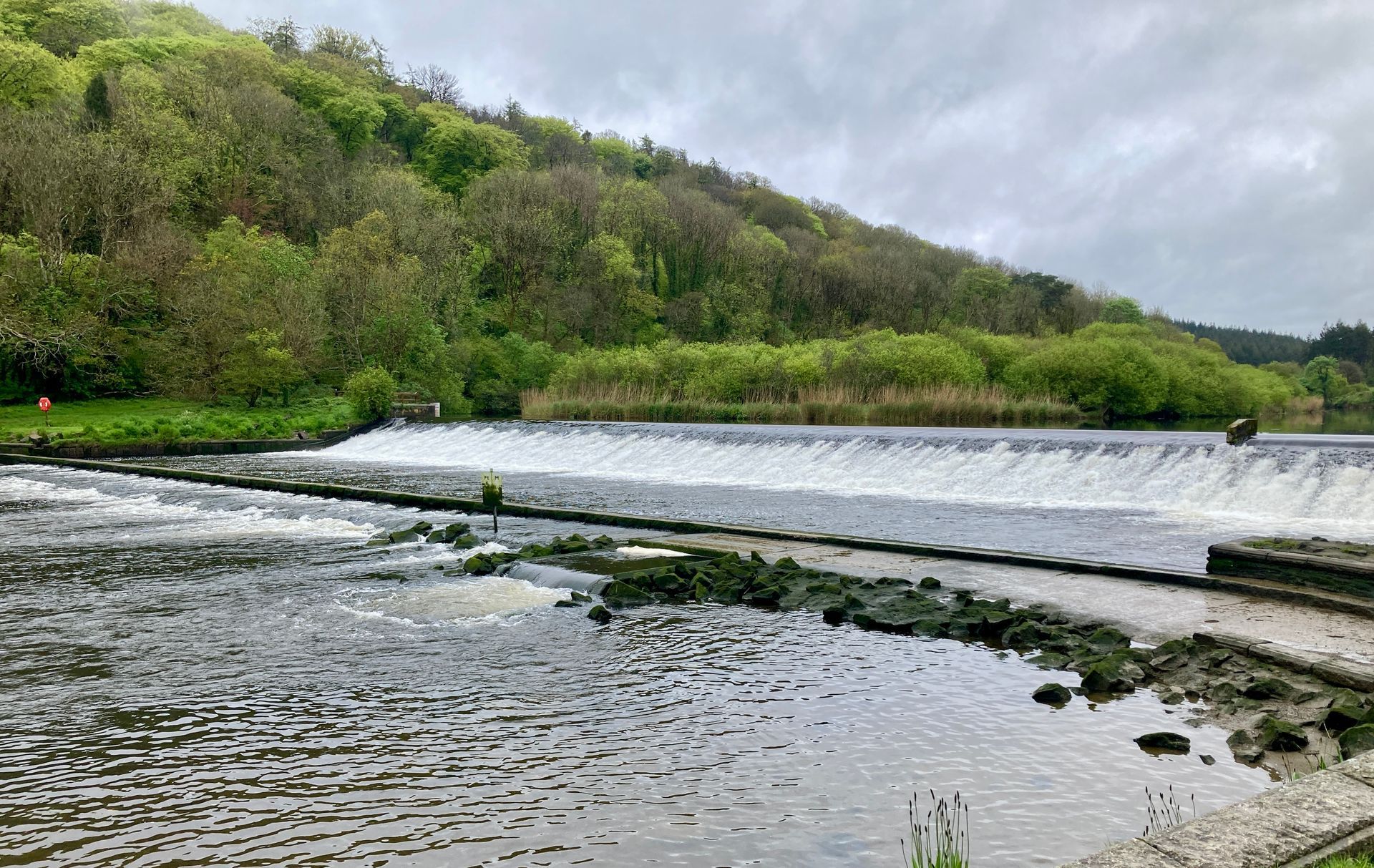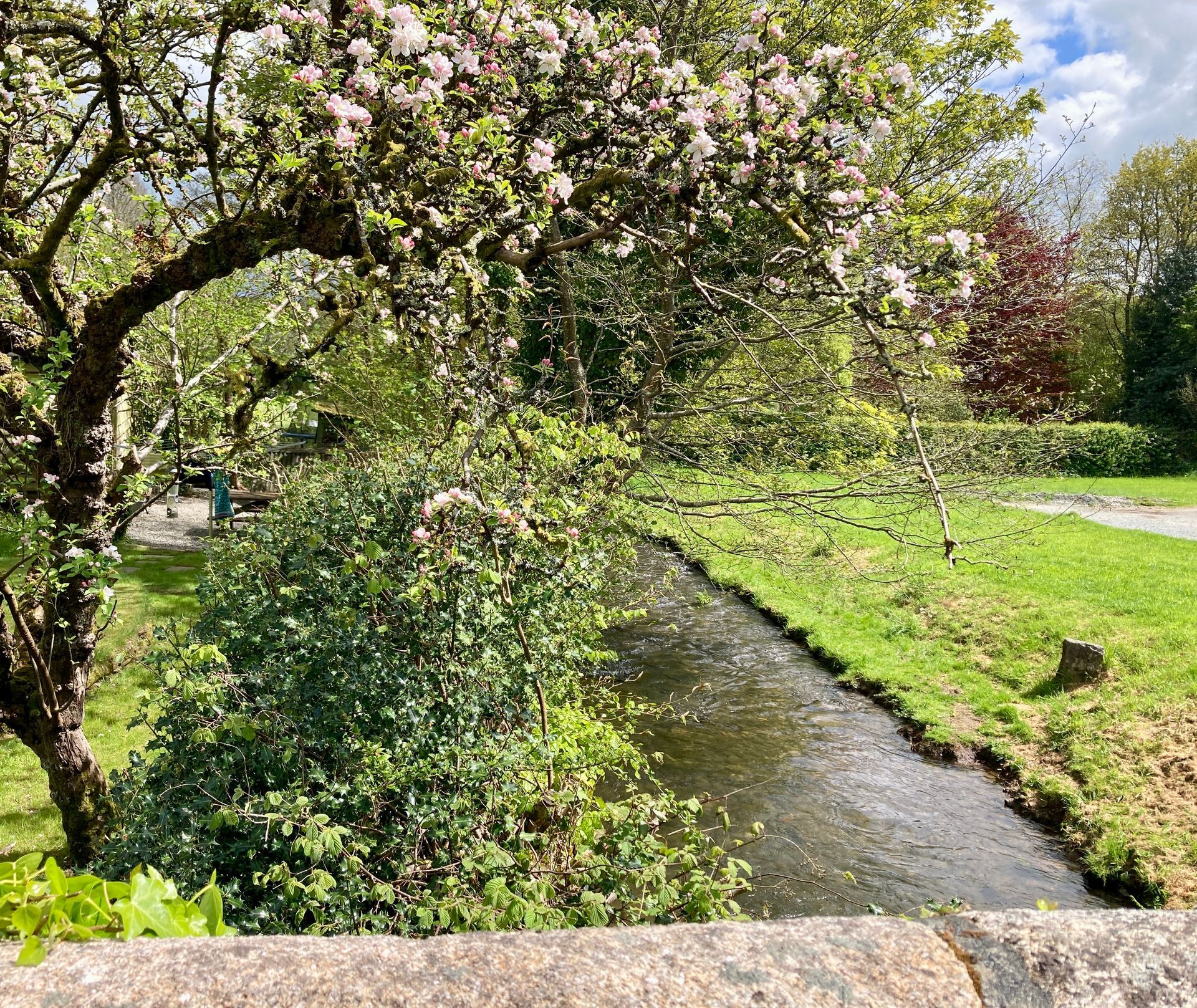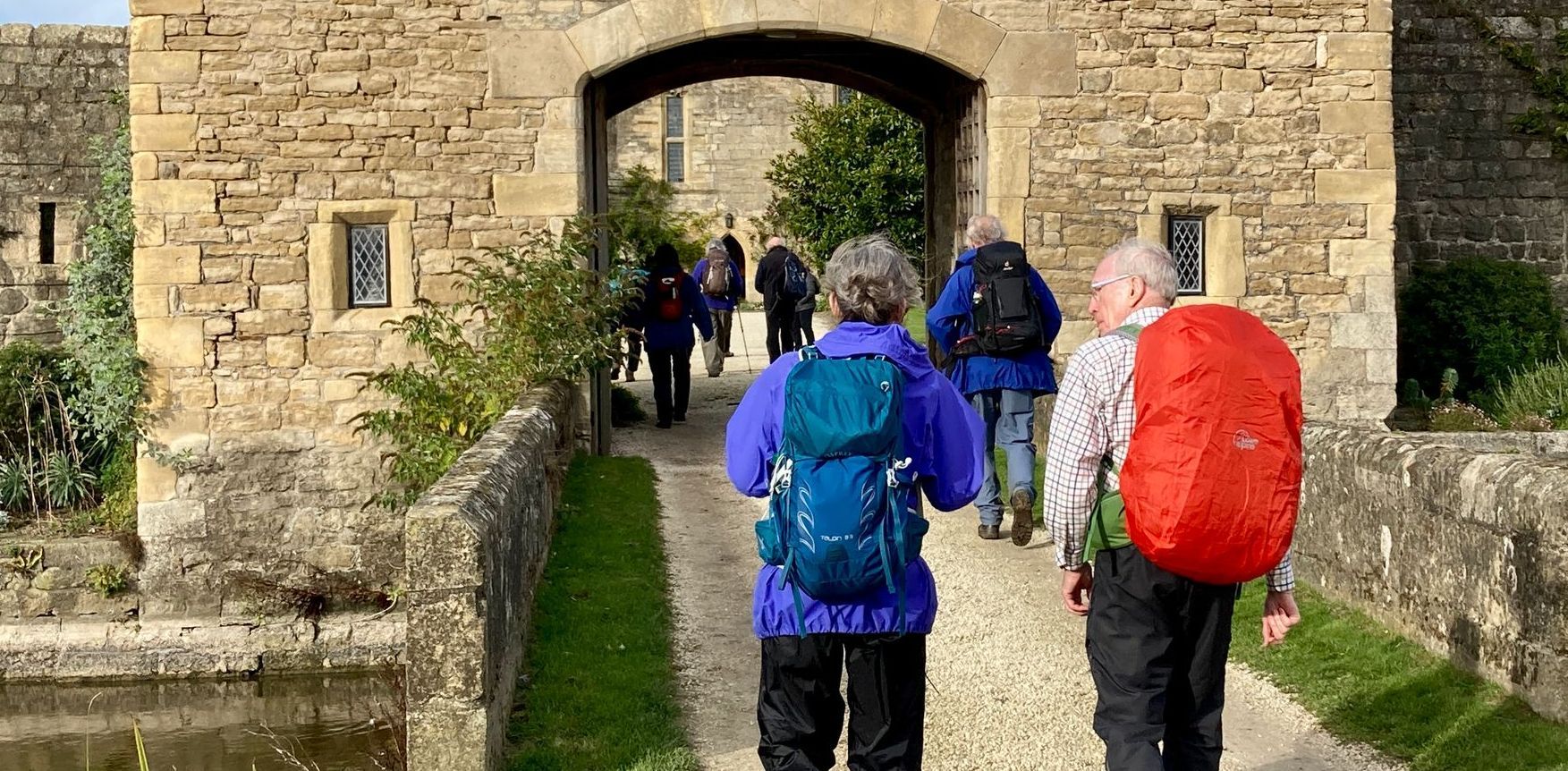The St Cuthbert Mayne Way
A Pilgrim Way for the Diocese of Plymouth from the Cathedral of SS Mary & Boniface in Plymouth to the Shrine of St Cuthbert Mayne in Launceston
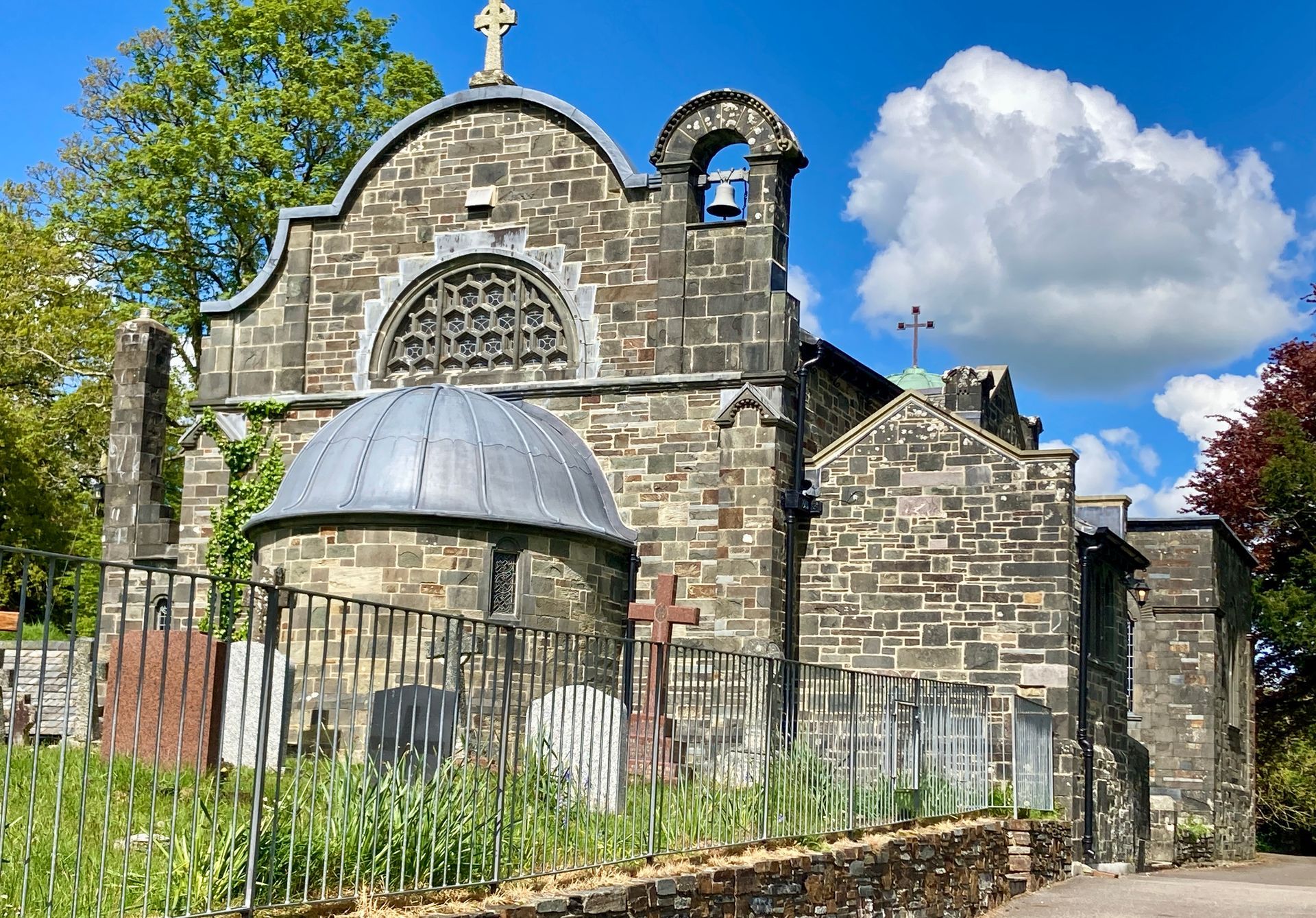
The Church of St Cuthbert Mayne, Launceston
About the route
Cuthbert Mayne was an English Catholic priest executed in Launceston under the laws of Elizabeth I. Mayne was beatified in 1886 and canonised as one of the Forty Martyrs of England and Wales in 1970.
NB the route involves two river crossings, one by a tidal ford and one by short train ride. You must check the times of tides and trains in advance!
The Way leaves the Cathedral and crosses Victoria Park to reach the Church of the Most Holy Redeemer near Plymouth docks and then the Church of St Paul. The route leaves Plymouth and follows the Tamar Valley Discovery Trail. The River Tavy is crossed using a tidal ford near Lopwell House to reach Bere Alston Station where a train must be taken to Calstock. The Way continues to follow the Tamar Valley Discovery Trail northwards over rolling hills and riverside meadows. After Horsebridge the route is mainly on quiet lanes to Milton Abbot. Finally the Way reaches Launceston and the Church and Shrine of St Cuthbert Mayne.
You can find out more about the Way and download the GPX file by clicking on the LEARN MORE tab in the
interactive map below
Guidance
You can use the tabs in this section to find the information you need for your pilgrimage.
The Outer Way provides practical advice about the route.
The Inner Way describes the spiritual highlights.
Walking guidance and maps: click on the button to download the details of the inner and outer way, walking guidance and maps.
Stages: route, food & drink, accommodation and public transport
1. The Cathedral of SS Mary & Boniface, Plymouth to the Church of St Paul, St Budeaux Plymouth via the Church of Our Most Holy Redeemer, Keyham Plymouth – 3.7 miles
The route is urban but takes in parks where possible and gives splendid views of the docks and Hamoaze Estuary. There are plenty of shops, pubs and accommodation in central Plymouth and convenience stores and cafés along the way. Buses can be found along most the route and there are 4 railway stations near the path.
2. The Church of St Paul, St Budeaux Plymouth to Tamerton Folliot – 3.2 miles
The route joins the Tamara Coast to Coast Way and follows creeks for much of the distance. There are 3 pubs (NB none offering food in 2024) and a takeaway in Tamerton Folliot. There may be Airbnb accommodation nearby. There are buses back to Plymouth from here.
3. Tamerton Foliot to Bere Alston Railway Station – 7 miles
The route is over farmland and then follows the River Tamar to the ford at Lopwell. The ford is covered by water for 2 hours either side of high tide so to avoid a long wait the tide times must be checked in advance of walking. Use the times for the nearby Blackstone Creek entrance: www.willyweather.co.uk/sw/devon/river-tavy-blaxton-creek-entrance After crossing the Tamar, the route follows a path and then lane to Bere Alston village and reaches the railway station. There are pubs, shops and a café in Bere Alston and bus stops. There are trains back to Plymouth and on to Calstock roughly every 2 hours from Bere Alston station. Check the timetable in advance using the link below. There is no accommodation enroute.
4. Calstock Railway Station to Horsebridge – 7.9 miles
The route is uphill on a lane from Calstock station, and then descends to follow the Tamar for much of the way. This is a delightful walk. There is a garden centre café near Oakenhayes and pubs at Chilsworthy and Horsebridge. There are buses to Tavistock from Horsebridge.
5. Horsebridge to Milton Abbot – 3 miles
A pleasant section mostly on quiet lanes. There is a pub and shop in Milton Abbot and B&B accommodation at Beera Farm. There are buses from Milton Abbot.
6. Milton Abbot to the Church & Shrine of St Cuthbert Mayne, Launceston – 9.9 miles
The route is over farmland and along quiet lanes. The road after Greystone Bridge was closed for quarrying (2024) but there is a footpath diversion. After this the route is mostly along quiet lanes. There are no facilities enroute. There are shops, pubs, restaurants and accommodation in Launceston, local buses and national coaches but sadly the railway is closed.
Public transport links
Trains:
https://www.nationalrail.co.uk/
Coaches:
https://www.nationalexpress.com/en
Buses:
Pilgrim people and places
NB Many churches are closed during daylight hours. If you would like to visit the churches and shrines it is best to check the parish website first. You can also email or phone the parish office to see is someone would be willing to open the church. Please be aware that many priests cover more than one church and so may live many miles away.
The Cathedral of St Mary & St Boniface, Plymouth
Catholicism almost died out in the Plymouth area during the penal years, but a mainly Irish congregation grew in the late C18 around the docks. In 1792 a chapel was built over a stable attached to an inn in Plymouth Dock. In 1806-07 a little chapel dedicated to SS Mary & John the Evangelist was built near the Naval Hospital. With the restoration of the Catholic hierarchy in 1850 Dr George Errington was appointed 1st Bishop of Plymouth and this little chapel was designated the cathedral of the new diocese. In 1856 Errington’s successor at Plymouth William Vaughan was able to purchase a site for a cathedral to be built in the Early English style. Construction proceeded quickly and the cathedral opened in 1858. At the time it was perhaps the grandest of the new Catholic cathedrals. The tower and spire were added in 1866. The cathedral suffered some damage in the Plymouth blitz. In 1958 new stone Stations of the Cross were installed in the aisles, from designs by Joseph Cribb, influenced by the Stations at Westminster Cathedral by Eric Gill, to whom Cribb was apprenticed. Re-orderings were undertaken in 1972 and 1994.
The Church of Our Most Holy Redeemer, Plymouth
From 1859 the Admiralty provided an old hulk, formerly "HMS Hotspur", as a chapel so that sailors could attend Mass. As the Dockyard expanded so the hulk was moved upstream and it became a long way for the sailors to row, so the Admiralty approached Bishop Vaughan. A site was acquired to build an onshore church for naval personnel. The Admiralty insisted on a seating capacity of 500 and so contributed £500 to the building costs and agreed on an annual contribution towards maintenance and repairs. The church was built in the late Gothic Revival style and opened in 1902. A presbytery and school followed. In April 1941 the church was hit in an air raid and left a roofless burnt-out shell. Masses were held in the school until the church re-opened in 1950. In 1988 a major reordering was undertaken. Today the church is part of Holy Trinity Parish.
The Church of St Paul, Plymouth
The land was purchased through a gift from the two Robinson sisters, who paid for several churches in the diocese in the 1930s. The church was built over 6 months during 1933. The parish priest, Fr James Tymons, was an amateur architect and influenced the design with its west front of red brick and Portland stone. The interior is said to be inspired by the Basilica of St Paul Outside the Walls in Rome. Post-Vatican II reordering involved the removal of the baldacchino and statues of saints. Today the church is part of Holy Trinity Parish.
The Church of St Cuthbert Mayne, Launceston
Cuthbert Mayne was born in 1543 near Barnstaple. He became an Anglican clergyman but converted to Catholicism at Oxford University under the influence of Edmund Campion. He fled to Douai and became one of the first priests to train abroad for the English mission. He returned in 1576 but was captured after only 3 months and imprisoned at Launceston Castle. The trial judge directed the jury to return a verdict of guilty, stating that, "where plain proofs were wanting, strong presumptions ought to take place". Mayne was convicted and sentenced to death. He was offered his life in return for a renunciation of his faith and an acknowledgement of the queen as head of the church. He kissed a copy of the Bible, declaring that "the queen neither ever was, nor is, nor ever shall be, the head of the church of England". He was hanged, drawn and quartered in the marketplace at Launceston on 29 November 1577.
The mission at Launceston was established in 1886 in the present presbytery by the Rev Charles Baskerville Langdon, an Anglican curate before his conversion. In 1887 a temporary iron church was built next door to the presbytery. The permanent church was built in 1911 in the Byzantine Romanesque style. In 1921 Fr Richard McElroy organised the first national pilgrimage in honour of Blessed Cuthbert Mayne as part of a campaign for the martyr’s canonisation. Fr McElroy provided a shrine in a chapel on the north side of the church. It holds a relic of the martyr’s skull and the ‘Inspeximus’ issued by the Crown giving details of the charges against Mayne.
In 1935 the church was consecrated and dedicated to the newly canonised SS John Fisher and Thomas More, and to the Blessed English Martyrs. In 1970, Pope Paul VI canonised the 40 English martyrs, including Mayne. The church was rededicated to St Cuthbert Mayne in 1977.
ABOUT THE DIOCESE OF PLYMOUTH
At the time of the Reformation several Catholics were martyred for their faith in all three counties that make up the modern Diocese of Plymouth. Notable among them was Cuthbert Mayne, a native of North Devon, who was arrested in Cornwall and hung drawn and quartered in Launceston. He is one of the patron saints of the Diocese.
Over the next few centuries the Catholic Church continued in the South-West with the support some local Catholic aristocratic families – notably the Welds in Dorset, the Cliffords in Devon and the Arundells in Cornwall. During the European upheaval associated with the French and Napoleonic wars, many refugees Catholic settled in the area, including several religious congregations. In 1850 the Roman Catholic Hierarchy was restored in this country and the Diocese was formed.
